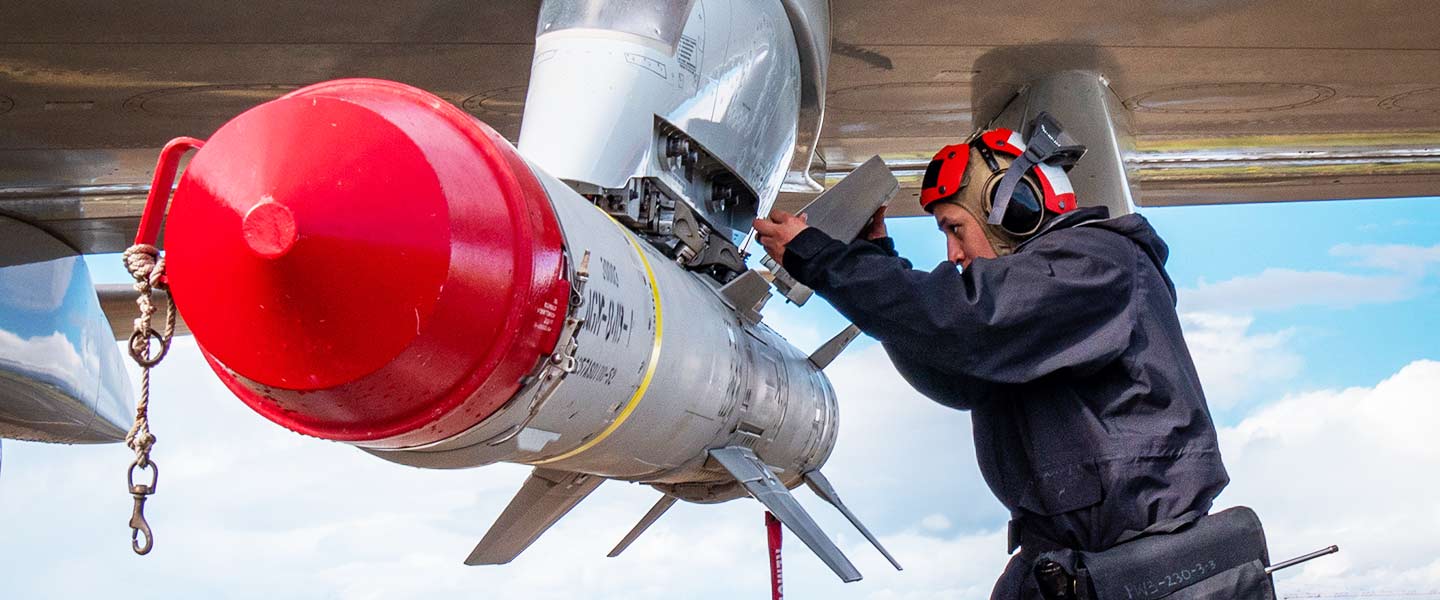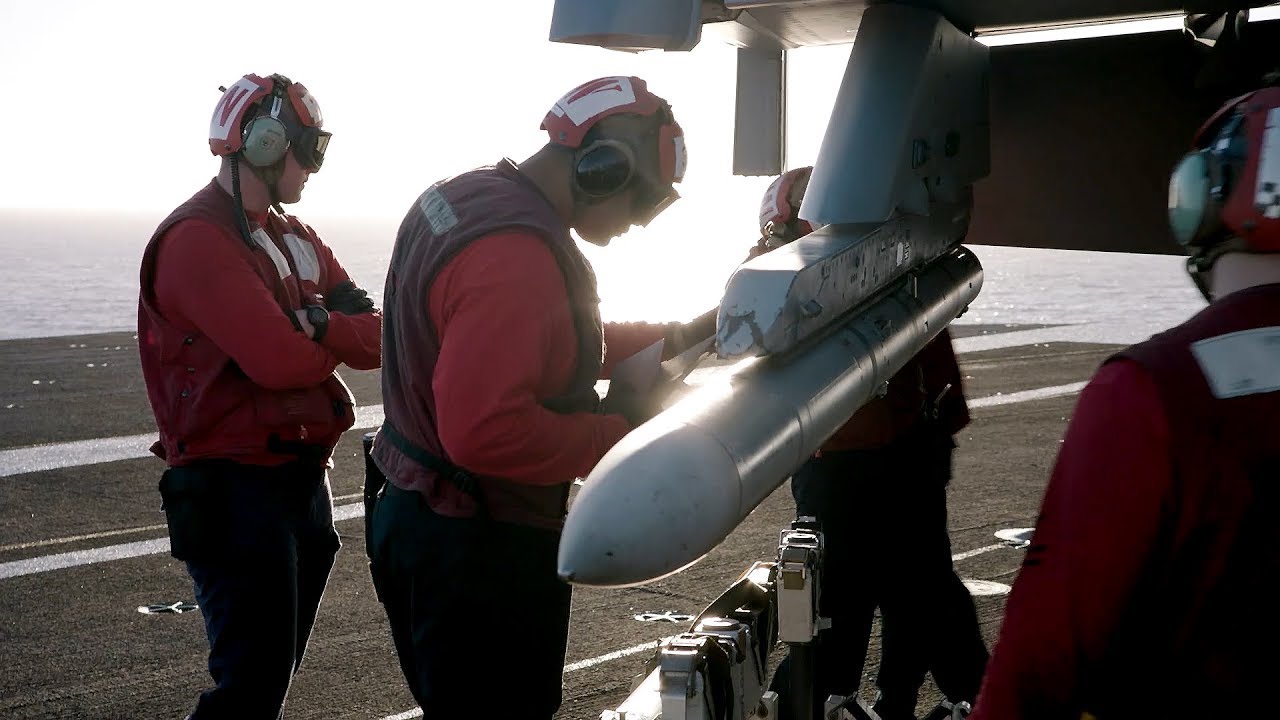What to Expect
More Information
Responsibilities
Aviation Ordnancemen (AO) are weapons specialists charged with managing all types of ammunition carried on Navy aircraft. Your job responsibilities as an AO may include:
- Inspecting, maintaining and repairing mechanical and electrical weapons and ordnance systems on aircraft
- Stowing, assembling, servicing and loading weapons and aviation ammunition including mines, torpedoes, missiles and rockets
- Servicing ammunition releasing and launching devices
- Loading supplemental munitions
- Assembling, testing and maintaining air-launched guided missiles
- Supervising operation of aviation ordnance shops, armories and stowage facilities
Work Environment
Navy AOs perform their duties at sea on flight decks and ashore in hangars, air station flight lines or in shops. In this role, you can expect to perform work of a physical nature as a member of a team.
Training & Advancement
Upon completion of initial training at Recruit Training Command Great Lakes (known as Boot Camp), you’ll report for specialized training, including:
Class "A" Technical School (9 weeks) in Pensacola, FL, for training in basic aviation theory and skills, and electronics troubleshooting.
After you complete training, you may be assigned to a squadron, aircraft carrier, Navy ship, air station or other on-shore station in the U.S. or abroad. Depending on the nature of your assignment, you may receive additional training in the form of a ship’s company strand course (2 weeks) or an airwing strand course (3 weeks) prior to reporting for duty.
Promotion opportunities are regularly available but competitive and based on performance.
Advanced Training
Advanced training as an Aviation Ordnanceman may also be available during later stages of your career. For those with further leadership aspirations and a college degree, Officer roles may be available, providing opportunities to lead and train others.
Post-Service Opportunities
Specialized training received and work experience gained in the course of service can lead to valuable credentialing and occupational opportunities in related fields in the civilian world, such as employment with international airlines or logistics firms.
Education Opportunities
Beyond offering access to professional credentials and certifications, Navy technical and operational training as an Aviation Ordnanceman can translate to credit hours toward a bachelor’s or associate degree through the American Council on Education.
You may also continue your education through undergraduate degree opportunities like the Navy College Program and Tuition Assistance and the Post-9/11 GI Bill.
Qualifications & Requirements
A high-school diploma or equivalent is required to become an Enlisted Sailor and an Aviation Ordnanceman. You must also be a U.S. citizen eligible for security clearance.
AO applicants should possess good math skills and a strong aptitude for working with tools, equipment and machinery. You should be able to perform detailed work, keep accurate records, and work well as part of a team.
Important physical attributes include a high level of fitness, normal use of your hands, normal hearing, and normal color and depth perception.
General qualifications may vary depending upon whether you’re currently serving, whether you’ve served before or whether you’ve never served before.
Part-Time Opportunities
Serving part-time as a Navy Reserve Sailor, your duties will be carried out during your scheduled drilling and training periods. During monthly drilling, Aviation Ordnancemen in the Navy Reserve typically work at a location close to their homes.
For annual training, you may serve anywhere in the world, including locations in the U.S., at bases overseas, or in areas where humanitarian needs are great.
Take a moment to learn more about the general roles and responsibilities of Navy Reserve Sailors.
Most of what you do in the Navy Reserve is considered training. The basic Navy Reserve commitment involves training a minimum of one weekend a month (referred to as drilling) and two weeks a year (referred to as Annual Training) – or the equivalent of that.
Aviation Ordnancemen in the Navy Reserve serve in an Enlisted role. Before receiving the ongoing professional training that comes with the job, initial training requirements must be met.
For current or former military Enlisted servicemembers, prior experience satisfies the initial Recruit Training requirement, so you will not need to go through Boot Camp again.
For those without prior military experience, you will need to meet the initial Recruit Training requirement by attending Boot Camp in Great Lakes, IL. This training course will prepare you for service in the Navy Reserve and count as your first Annual Training.
































































































































